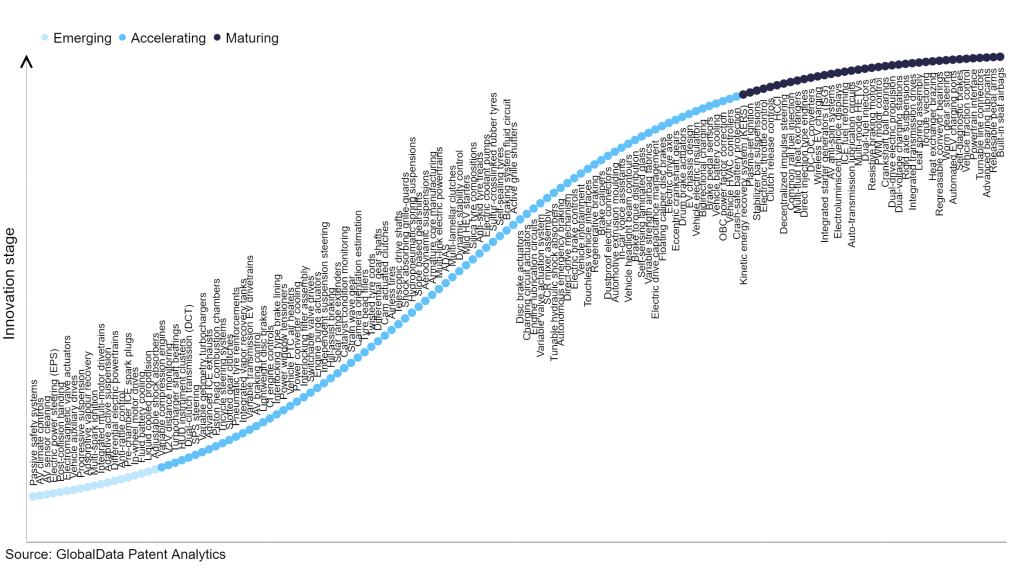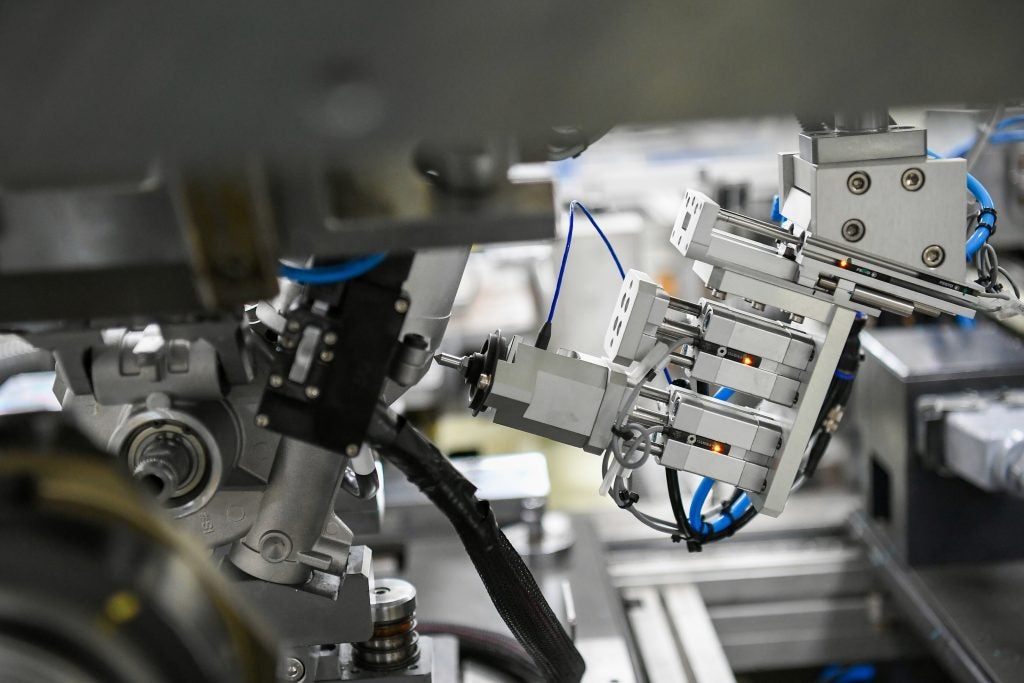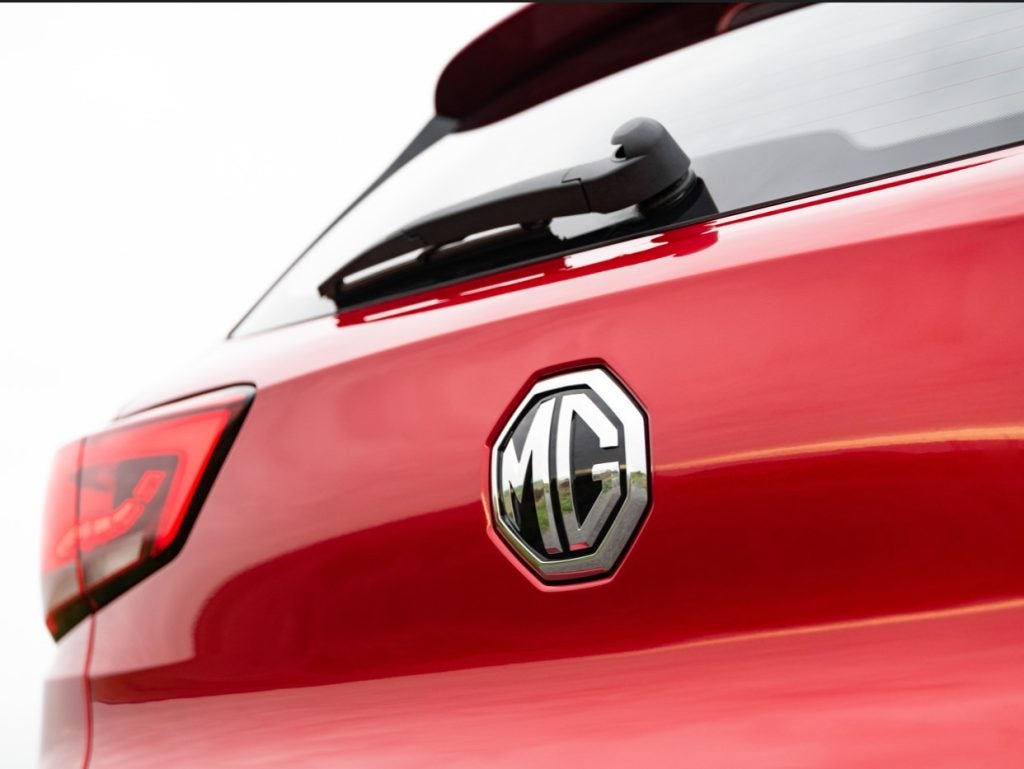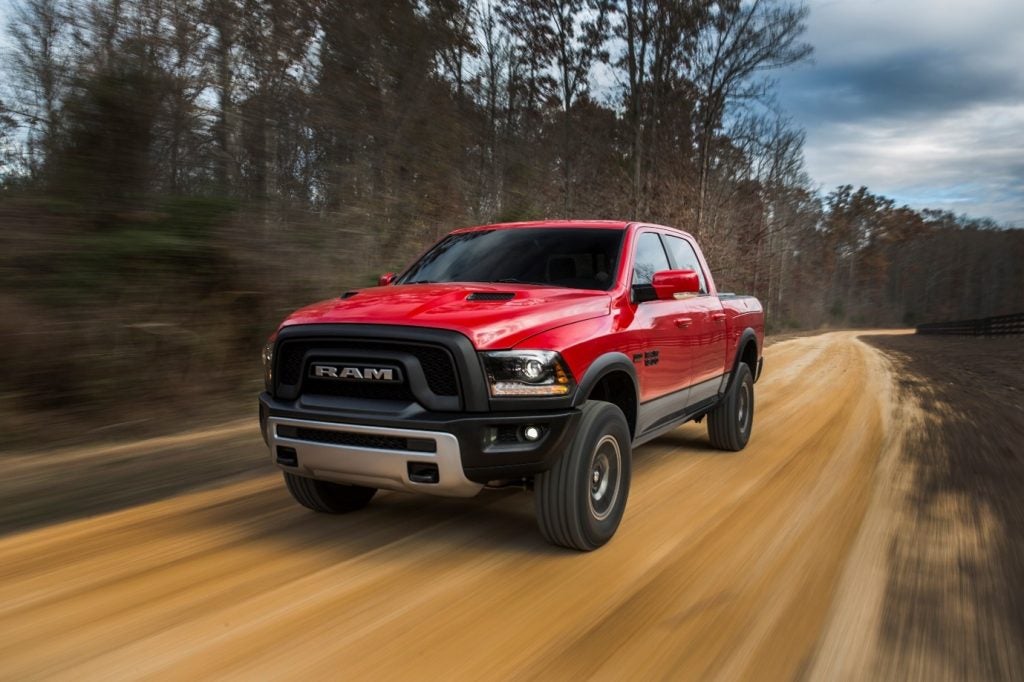The automotive industry continues to be a hotbed of patent innovation. Activity is driven by enhanced driving experience, safety and braking performance, and growing importance of technologies which are being discovered to manufacture reliable braking parts and components. In the last three years alone, there have been over 1.7 million patents filed and granted in the automotive industry, according to GlobalData’s report on Innovation in automotive: brake calipers. Buy the report here.
However, not all innovations are equal, and nor do they follow a constant upward trend. Instead, their evolution takes the form of an S-shaped curve that reflects their typical lifecycle from early emergence to accelerating adoption, before finally stabilizing and reaching maturity.
Identifying where a particular innovation is on this journey, especially those that are in the emerging and accelerating stages, is essential for understanding their current level of adoption and the likely future trajectory and impact they will have.
300+ innovations will shape the automotive industry
According to GlobalData’s Technology Foresight, which plots the S-curve for the automotive industry using innovation intensity models built on over one million patents, there are 300+ innovation areas that will shape the future of the industry.
Within the emerging innovation stage, integrated multi-motor drivetrains, electric power steering (EPS), and post-collision handing are useful technologies that are in the early stages of wider application and should be tracked closely. Variable compression engines, V2V distance monitoring, and turbocharger shaft bearings are some of the accelerating innovation areas, where adoption has been steadily increasing. Among maturing innovation areas are kinetic energy recovery system (KERS) and plasma-jet ignition, which are now well-established in the industry.
Innovation S-curve for the automotive industry

Brake callipers is a key innovation area in automotive
The disc brake system, is found in most cars' front brakes, including calipers. The brake pads and pistons on a car are kept inside the brake caliper, which is used to create friction with the brake rotors in order to slow the wheels of the vehicle.
GlobalData’s analysis also uncovers the companies at the forefront of each innovation area and assesses the potential reach and impact of their patenting activity across different applications and geographies. According to GlobalData, there are 20+ companies, spanning technology vendors, established automotive companies, and up-and-coming start-ups engaged in the development and application of brake calipers.
Key players in brake calipers – a disruptive innovation in the automotive industry
‘Application diversity’ measures the number of applications identified for each patent. It broadly splits companies into either ‘niche’ or ‘diversified’ innovators.
‘Geographic reach’ refers to the number of countries each patent is registered in. It reflects the breadth of geographic application intended, ranging from ‘global’ to ‘local’.
Patent volumes related to brake calipers
| Company | Total patents (2021 - 2023) | Premium intelligence on the world's largest companies |
| Hyundai Mobis | 36 | Unlock Company Profile |
| COSCO Shipping | 12 | Unlock Company Profile |
| NTT | 16 | Unlock Company Profile |
| HL Mando | 50 | Unlock Company Profile |
| Nippon Light Metal | 12 | Unlock Company Profile |
| Compagnie Generale des Etablissements Michelin | 23 | Unlock Company Profile |
| Toyota Motor | 52 | Unlock Company Profile |
| Akebono Brake Industry | 123 | Unlock Company Profile |
| Shimano | 73 | Unlock Company Profile |
| Kyung Chang Industrial | 12 | Unlock Company Profile |
| Hyundai Motor | 16 | Unlock Company Profile |
| Aisin | 18 | Unlock Company Profile |
| Westinghouse Air Brake Technologies | 14 | Unlock Company Profile |
| Cummins | 155 | Unlock Company Profile |
| Hitachi | 115 | Unlock Company Profile |
| Porsche Automobil | 12 | Unlock Company Profile |
| ZF Commercial Vehicle Control Systems India | 36 | Unlock Company Profile |
| Safran | 15 | Unlock Company Profile |
| Continental | 19 | Unlock Company Profile |
| Alcon Components | 19 | Unlock Company Profile |
| BPW Bergische Achsen | 34 | Unlock Company Profile |
| Boler | 22 | Unlock Company Profile |
| MANN+HUMMEL International | 16 | Unlock Company Profile |
| Stella Vermogensverwaltungs | 280 | Unlock Company Profile |
| Nuova FourB | 219 | Unlock Company Profile |
| Zeppelin-Stiftung | 87 | Unlock Company Profile |
| China Energy Investment | 12 | Unlock Company Profile |
Source: GlobalData Patent Analytics
Akebono Brake Industry is one of the key patent filers in the brake calipers segment. The company provides opposed piston type 10-pot and 6-pot brake calipers for superior braking performance at high speeds for high-performance cars. Other leading patent filers in the brake calipers innovation area include Stella Vermogensverwaltungs, Nuova Four, Cummins, and Hitachi.
In terms of application diversity, Westinghouse Air Brake Technologies held the top position, while China Energy Investment and NTT stood in second and third positions, respectively. By means of geographic reach, Westinghouse Air Brake Technologies leads the pack, followed by China Energy Investment and Nippon Light Metal.
To further understand the key themes and technologies disrupting the automotive industry, access GlobalData’s latest thematic research report on Automotive.
Data Insights
From

The gold standard of business intelligence.
Blending expert knowledge with cutting-edge technology, GlobalData’s unrivalled proprietary data will enable you to decode what’s happening in your market. You can make better informed decisions and gain a future-proof advantage over your competitors.







